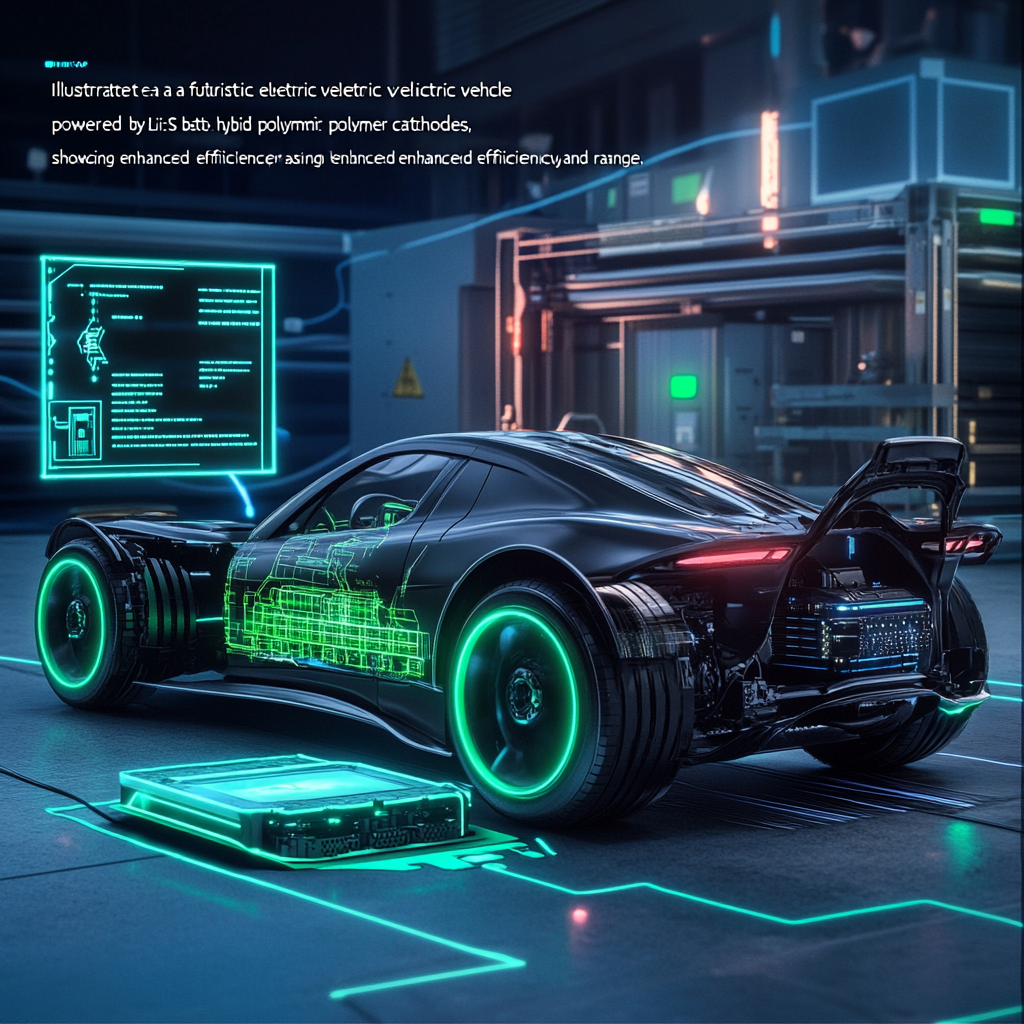
Revolutionary Breakthrough: New Cathode Design for Affordable and Durable EV Batteries
In the world of electric vehicles, where companies parade their latest innovations like peacocks with bright plumage, the spotlight recently shone on a discovery that could flip the game of energy storage upside down. Imagine a sleek car gliding through the streets, powered by a battery that's not just green in terms of its energy source, but also in its efficiency and cost-effectiveness. This isn’t the stuff of sci-fi—oh no! It’s the real deal, breaking news from the realm of battery tech: the hybrid polymer network cathode, a brainchild of the esteemed Donghai Wang and his eclectic crew of innovation-hunters from Southern Methodist University.
But wait! Before we dash off to the future, let’s take a minute to soak in the stormy history of lithium-sulfur (Li-S) batteries—those sparkling jewels that have been at the forefront of renewable energy discussions. Li-S batteries have long been salivated over, all thanks to their impressive ability to hoard heaps of energy, significantly more than our old ally, the lithium-ion battery. Yet, like many promising inventions, they come with a hefty baggage of troubles. The primary villain in this tale is none other than that rascal called polysulfide dissolution. It's the kind of villain that sneaks up on you, causing those zealous lithium ions to bond mischieffully with sulfur at the cathode and creating soluble polysulfides that thrill with their vibrations yet ultimately drift away into the unforgiving electrolyte. What’s worse? This dance of dissolution leads to the slow doom of the cathode, shortening the lifespan of our beloved batteries. Tragic, is it not?
Enter the noble knights of innovation: the research team who saw these struggles and decided it was time to step into the ring with a truly ingenious solution. Their battle armor? A hybrid polymer network cathode—a mouthful, sure, but stay with me! This revolutionary cathode employs a splendid combination of sulfur bonding tethers, atomic adsorption, and speedy Li-ion/electron transport at the molecular level. It’s like a superhero squad that doesn’t take breaks; with every charge and discharge, they are busy rebonding and gobbling up any straying sulfur species that dare to cause trouble. This means fewer soluble polysulfides floating about and an extended cycle life for our dear batteries. Huzzah!
Now, let’s talk perks. What exactly does this hybrid polymer network cathode bring to the proverbial party? Well, for starters, we’re looking at a higher energy capacity that would make even the most jaded battery enthusiast weak in the knees. Over 900 mAh/g, folks! That’s a star-studded performance compared to the mediocre 150-250 mAh/g capacity of traditional lithium-ion batteries. Think of the possibilities—your electric car could dabble in road trip fantasies without you sweating over whether you'll make it to the next charging station.
Next up, we have what everyone craves but seldom gets: excellent cycling stability. This beauty retains its charm without breaking down after a couple of rounds. The hybrid polymer network cathode promises a performance that can withstand the test of time, blissfully charging and discharging without fading into a shadow of its former self. Just imagine—an electric vehicle that can keep its cool through multiple cycles. That’s the kind of word-of-mouth marketing even your grandma would rave about.
And let’s not forget the financial angles: cost-effectiveness! Who doesn't want to save a buck or two while saving the planet? These batteries are not only cheaper to produce, but they can also hold more energy, meaning electric vehicles could finally take a big step into the realm of consumer affordability. With prices dropping, it beckons more people into the green revolution, breaking the chains of fossil fuel dependency like a hero in a superhero movie. Cue applause!
It's important to acknowledge the collaboration that brought this dream team together. Behind every great innovation is a tapestry of expertise woven together in a cosmos filled with intellect, where specialists from Pennsylvania State University, Pacific Northwest National Laboratory, Brookhaven National Laboratory, University of Illinois at Chicago, and the Argonne National Laboratory unite for a common cause. It’s the kind of collaborative spirit that urges progress forward; an interdisciplinary love fest fueled by common goals and a passion for scientific advancement.
Now, let's peer into the crystal ball and contemplate the implications of this inventive leap for electric vehicles and the collective battle against climate change. The applications here could ripple through the industry, causing transformational waves. We are not just talking about longer battery life; we could witness a new era of reliability and performance that could catapult electric vehicles into mainstream acceptance. Imagine a world where your electric vehicle can take you on road trips without the constant pit stops for charging. More efficiency means farther travels on one charge—a plus for that bustling life, right?
Moreover, with cost-effective Li-S batteries emerging in the market, electric vehicles could become a viable option for the average Joe and Jane. Who wouldn't want to drive an eco-friendly, wallet-friendly vehicle that does wonders for the planet while looking sleek and modern?
As we wrap up this electrifying tale of innovation, the hybrid polymer network cathode emerges as more than just a technical advancement; it’s a beacon of hope for a greener future. A testament to what happens when ingenuity meets collaboration, and a reminder that progress often comes from a good dose of science tempered by creativity. One can only dream of the day when these futuristic electric vehicles dominate our streets, whispering tales of progress without leaving a carbon footprint in their wake.
Want to stay up to date with the latest news on neural networks and automation? Subscribe to our Telegram channel: @channel_neirotoken.

